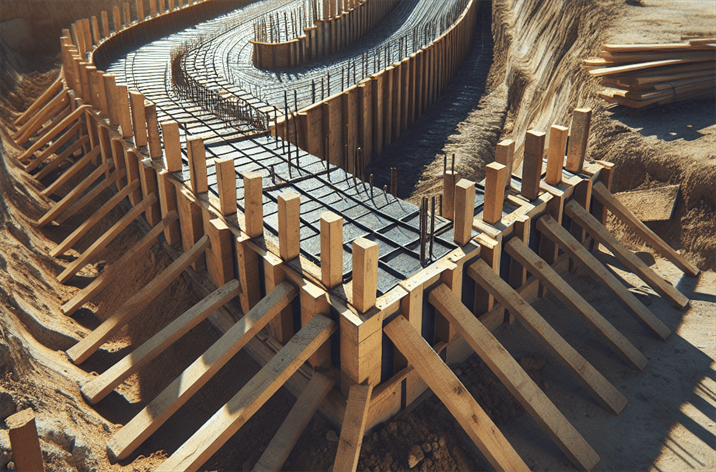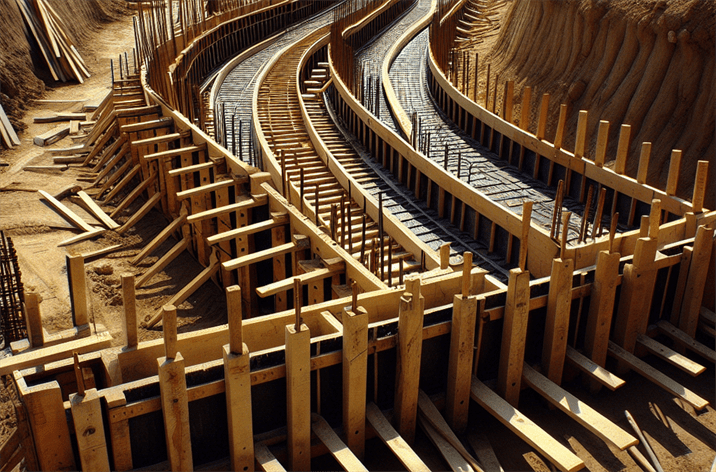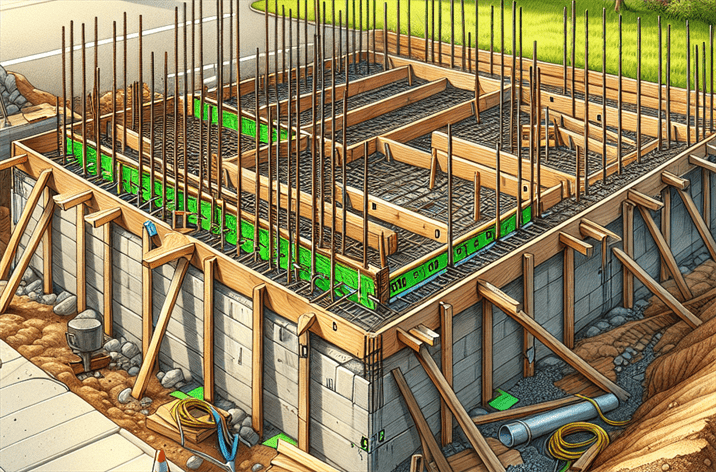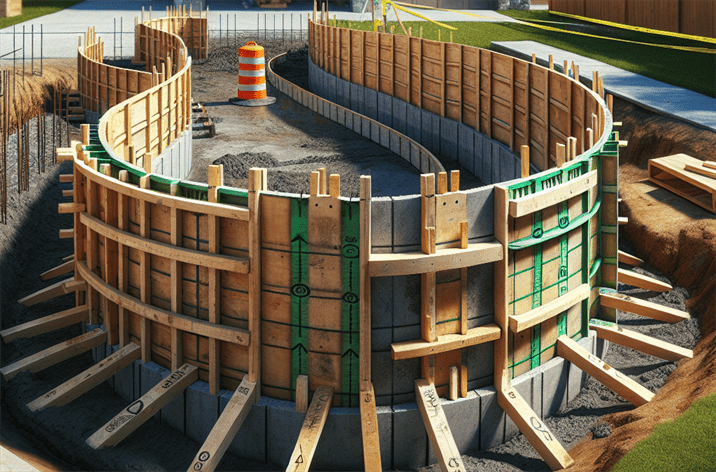Construction Site Markers: Best Practices for Accuracy
Introduction
Did you know that the accuracy of construction site markers can significantly influence project timelines and budgets? In the fast-paced world of construction, where precision is paramount, the role of construction site markers cannot be overstated. These markers, ranging from simple wooden stakes to advanced electronic systems, are essential in determining boundaries, layouts, and elevations.
As construction projects become increasingly complex—incorporating advanced technologies like Building Information Modeling (BIM) and Geographic Information Systems (GIS)—the demand for precise construction site markers has surged. They contribute not only to the efficiency of the building process but also to safety by clearly delineating active areas. Understanding their functionality and best practices for their use can drastically improve project outcomes.
In this article, we will explore what construction site markers are, their historical development, the mechanics behind their operation, and the future trends shaping their use. We will also highlight common challenges faced in the field and the best practices to overcome them. For a deeper look into how accurate construction site markers can enhance project outcomes, explore our guide on Effective Construction Project Management Communication.
What is Construction Site Markers?
Definition
Construction site markers refer to various tools and materials used to indicate specific locations, boundaries, and elevations on a construction site. They serve as guides for construction crews, ensuring that work is executed according to the specified plans. Common types of markers include wooden stakes, flags, spray paint, and electronic devices.
Historical Context
The use of construction site markers has evolved significantly over the years. Initially, builders relied on rudimentary tools such as stones and simple wooden stakes to mark boundaries. As construction techniques advanced, so did the complexity of the markers used. The introduction of surveying technology in the 18th century brought about more precise instruments, allowing for greater accuracy in site layout. Today, with the integration of digital tools, construction site markers have become more sophisticated, offering real-time data and improved accuracy.
The Importance of Construction Site Markers
In today’s construction landscape, the importance of construction site markers has increased significantly. With the rise of complex projects that involve multiple stakeholders and intricate layouts, precise markers are essential for effective communication and workflow management. They help prevent costly mistakes and delays, ensuring that construction adheres to regulatory guidelines and safety standards.
Construction Site Markers in the Context of Civil Engineering
In civil engineering, construction site markers play a critical role in project management. They assist engineers and architects in visualizing the project layout, making it easier to communicate plans to the construction team. Accurate markers are vital in large-scale projects, such as highways and bridges, where precision is crucial for structural integrity.
Key Players or Contributors
Several organizations and technologies have contributed to the advancement of construction site markers. Companies specializing in surveying equipment, for example, have developed high-tech solutions like GPS systems and laser scanning tools that enhance the accuracy of site markers. As technology continues to evolve, these innovations are set to influence the future of construction significantly.
To learn more about how construction site markers fit into broader construction strategies, see our article on Top Construction Stakes and Lath Usage.
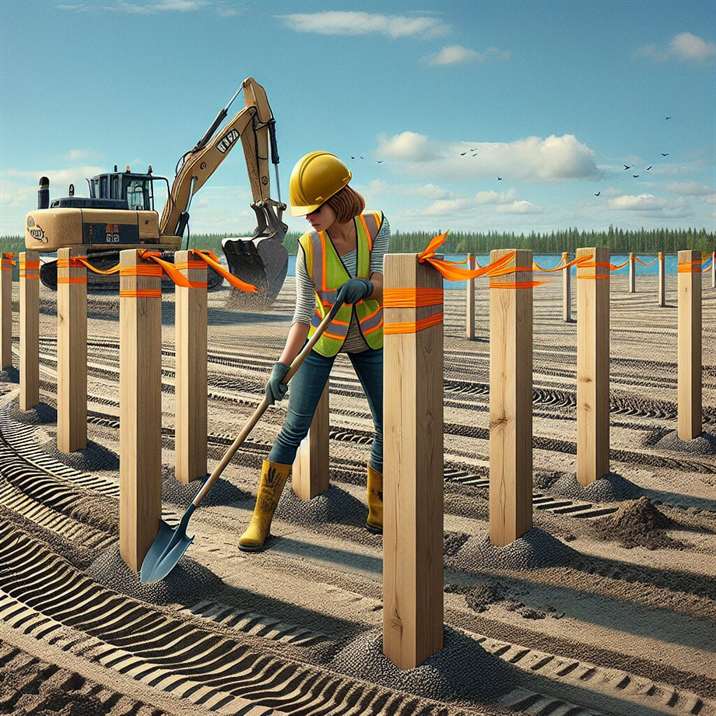
How Do Construction Site Markers Work?
The Mechanics of Construction Site Markers
Understanding how construction site markers work is essential for their effective application in the field. Typically, markers are placed at specific intervals along the project’s perimeter and key points defined in the project plans. These markers serve several functions:
- Boundary Definition: Clearly delineate the project area to prevent encroachments on adjacent properties.
- Elevation Control: Help in establishing levels for various construction elements, such as foundations and drainage systems.
- Layout Guidance: Provide a visual reference for workers, ensuring that structures are built according to the specified design.
Markers can be made from various materials, including wood, plastic, metal, and even biodegradable options, depending on the project’s needs and environmental considerations.
Technological Foundations of Construction Site Markers
The integration of technology in construction site markers has revolutionized the construction industry. For instance, GPS and GIS technologies allow for precise location tracking, enabling markers to be placed with a high degree of accuracy. Additionally, digital tools such as drones can quickly survey large areas, providing real-time data that can be used to adjust the placement of markers on-site.
Benefits of Using Construction Site Markers
Enhancing Accuracy and Efficiency
One of the primary benefits of using construction site markers is the enhancement of accuracy in project execution. Accurate markers help ensure that the construction adheres to the intended design, minimizing costly errors. They also streamline the workflow by providing clear guidelines for workers, thus improving overall efficiency.
Safety Assurance
Safety is a critical concern on construction sites. Construction site markers help delineate hazardous areas, keeping workers informed about where they should and shouldn’t be. By marking out these zones, they contribute to a safer working environment and help prevent accidents.
Cost-Effectiveness
Investing in accurate construction site markers can lead to significant cost savings over the life of a project. By reducing errors and enhancing efficiency, these markers help avoid delays and additional expenses. Moreover, using durable materials can prolong the life of the markers, ensuring that they serve their purpose throughout the project’s duration.
Streamlined Communication
Effective communication is vital in construction projects involving multiple teams and stakeholders. Construction site markers serve as a common point of reference, making it easier for all parties to understand the project’s layout and requirements. This clarity fosters collaboration and helps prevent misunderstandings.
Common Challenges in Using Construction Site Markers
While the benefits of construction site markers are clear, several challenges can arise in their implementation:
- Environmental Factors: Weather conditions can affect the visibility and longevity of markers. For instance, heavy rain can wash away paint, while strong winds can displace lightweight markers.
- Human Error: Misplacement or misinterpretation of markers can lead to significant issues, including structural errors.
- Material Durability: Not all markers are created equal. Some materials may deteriorate quickly, requiring frequent replacement.
Future Trends in Construction Site Markers
The Rise of Smart Markers
As the construction industry embraces digital transformation, the emergence of smart markers is on the horizon. These markers could incorporate sensors to provide real-time data on environmental conditions, structural integrity, and other critical factors. Such innovations would enhance the accuracy and functionality of construction site markers.
Integration with Building Information Modeling (BIM)
The integration of construction site markers with BIM technology is likely to become more prevalent. This will allow for more precise planning and execution, as digital models can directly inform marker placement. The combination of physical markers and digital tools could lead to unprecedented levels of accuracy in construction.
Eco-Friendly Options
With growing awareness of environmental issues, there is a shift towards sustainable materials for construction site markers. Companies are exploring biodegradable options and recycled materials to reduce their environmental impact while maintaining functionality.
Conclusion
In conclusion, construction site markers are essential tools in the construction industry, ensuring accuracy, efficiency, and safety. As technology continues to evolve, so too will the methods and materials used for these markers, paving the way for smarter, more sustainable solutions. By understanding their importance and implementing best practices, construction professionals can enhance project outcomes and streamline operations.
Whether you are a project manager, contractor, or engineer, having a thorough understanding of construction site markers will empower you to make informed decisions that benefit your projects. For more insights on effective construction practices, consider reading our article on Cost-effective, Robust Survey Stakes Benefits.
Resource Links:
1. OSHA Construction Markers – Guidelines on the use of markers for safety and hazard identification on construction sites.
2. CDC Construction Site Markers – Information on the importance of markers in promoting safety and compliance in construction environments.
3. NAIOP Construction Site Marketing Strategies – Discusses how construction site markers can also serve as marketing tools for ongoing projects.


